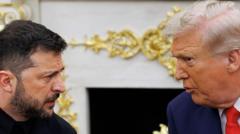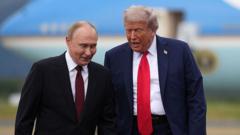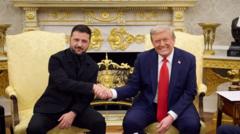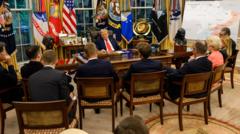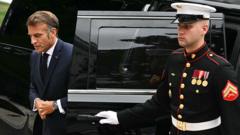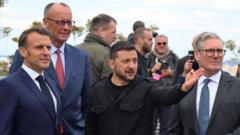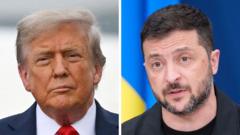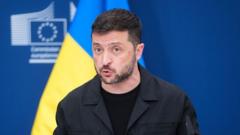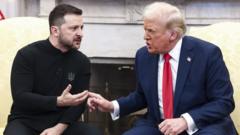Ukrainian President Volodymyr Zelensky’s recent visit to the White House showcased a cautious yet strategic approach to international diplomacy amid ongoing tensions with Russia, focusing on security and potential negotiations.
Zelensky’s Diplomatic Balancing Act at the White House: Time and Tactics

Zelensky’s Diplomatic Balancing Act at the White House: Time and Tactics
Ukrainian President Volodymyr Zelensky navigates a delicate diplomatic landscape during his visit to Washington, emphasizing security guarantees while seeking to maintain a united front.
Ukrainian President Volodymyr Zelensky left the White House with an optimistic tone as he sought to reinforce security links with the U.S. during his recent meetings with President Donald Trump. Unlike their previous encounter, which was rife with tension, the two leaders presented a united front, with both acknowledging their differences while remaining cordial. Zelensky, dressed in a tailored suit and frequently expressing gratitude, appeared eager to maintain a positive relationship with his U.S. counterpart.
During his appearance in the Oval Office, Zelensky was less vocal than expected, possibly due to the nuanced differences between the two nations' approaches. These differences became more evident during a joint press conference with European leaders, where German Chancellor Friedrich Merz and French President Emmanuel Macron suggested that a ceasefire should be the immediate next step, contrary to Trump's position that focused on a permanent resolution first. Throughout these discussions, Zelensky remained notably quiet on the ceasefire topic.
Subsequent discussions seemingly centered on potential security guarantees for Ukraine and the possibility of a meeting between Zelensky and Russian President Vladimir Putin. While no specifics on the guarantees were shared publicly, Zelensky later described them as essential for paving the way to ending the conflict in his public remarks outside the White House.
Zelensky emphasized that security guarantees could entail significant military aid from the U.S., including proposals for a $90 billion deal for advanced weaponry, and the U.S. purchasing Ukrainian drones to bolster local production. Although no formal pact was finalized following the talks, Zelensky expressed hope for a resolution within the next ten days. He was also open to a potential direct meeting with Putin, suggesting Trump's involvement if Moscow agreed, though the Russian president has maintained a distance from direct negotiations with the Ukrainian leader.
Notably, Zelensky showcased a map illustrating the relatively minor territorial gains Russia had made, asserting that they've occupied less than 1% of Ukrainian land over the past 1,000 days. This revelation appeared to pivot Trump's reception of the meeting, highlighting the ongoing challenges and complexities of the conflict.
Zelensky characterized his interaction with Trump as a "warm" encounter, reiterating Ukraine's commitment to pursuing peace while remaining cautious about discussing sensitive topics such as territorial concessions. Nevertheless, the key takeaway from Zelensky’s diplomatic mission seemed to focus on buying additional time for Ukraine, allowing both nations to strategize in light of their ongoing geopolitical struggle.
Despite the significant backdrop of conflict, Zelensky's successful navigation of the diplomatic terrain in Washington serves as an essential step in bolstering Ukraine's position in the global arena.


